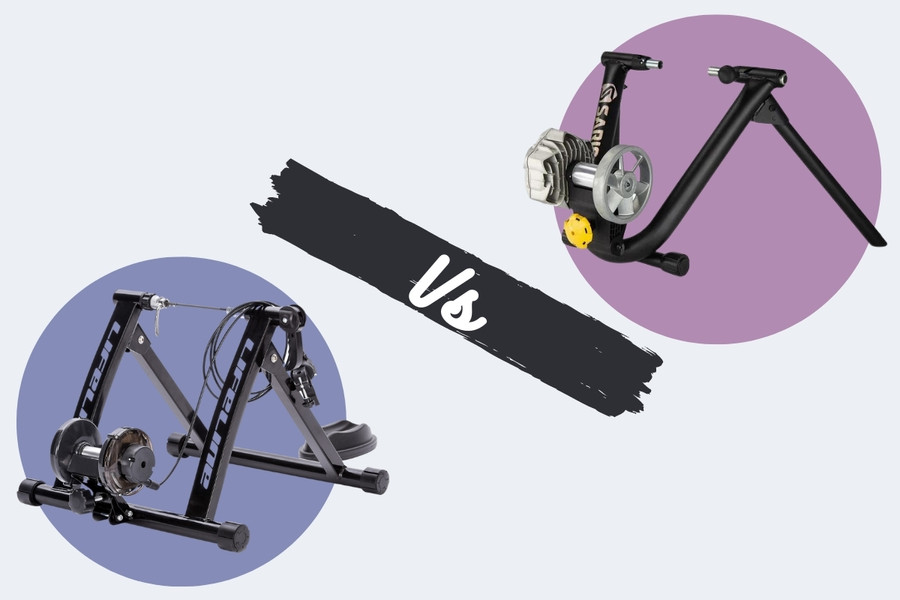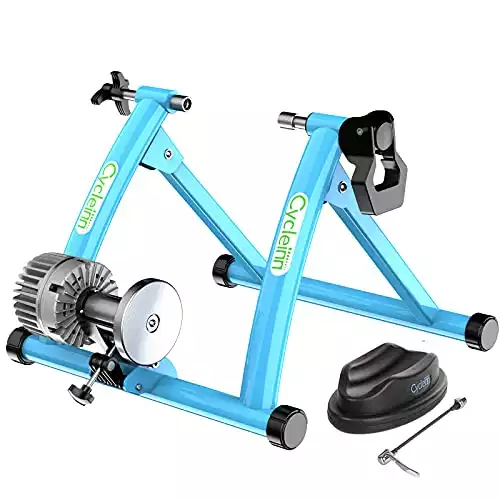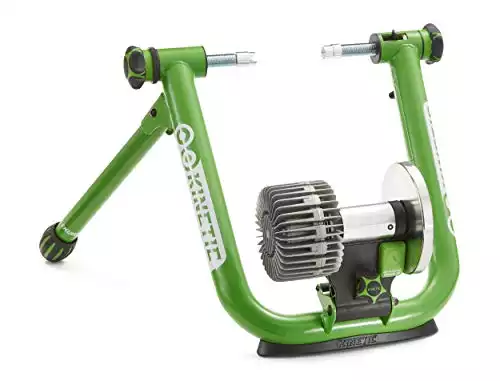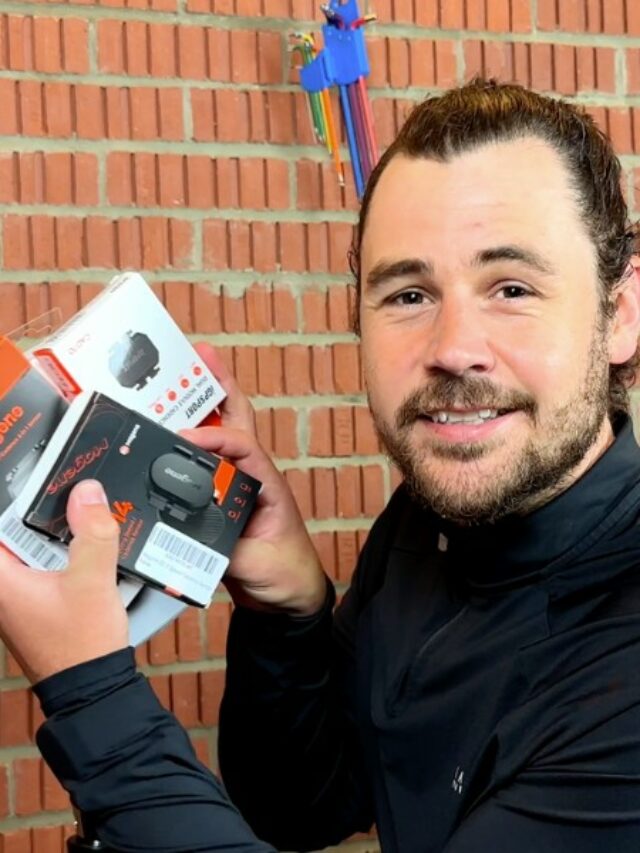
CPT & Indoor Cycling Instructor
When winter comes around, many of us cyclists struggle to get our training in. With many of us living in places where the weather turns bad, getting your cycling fix in can be difficult. Many of us turn to training indoors, and this might be on a spinning
Here at Girl
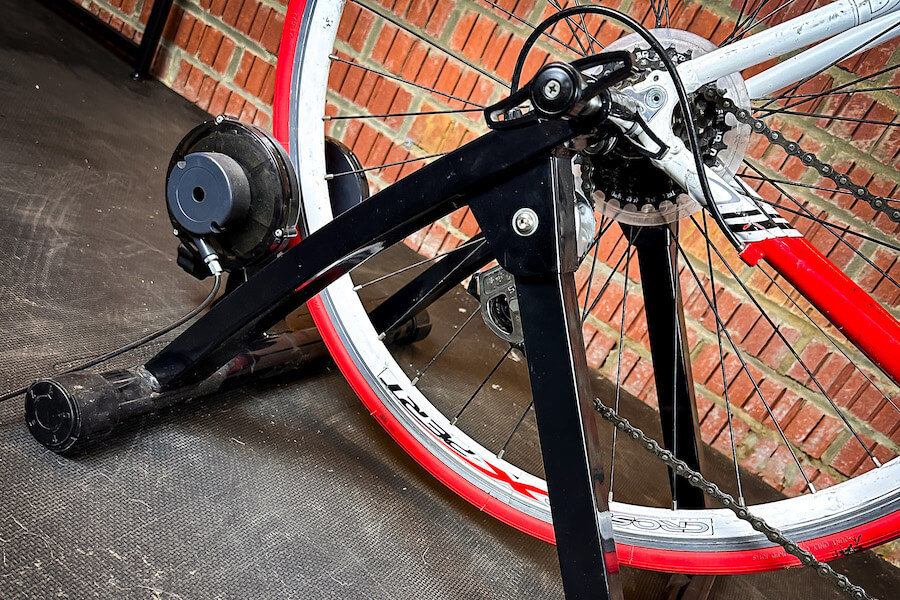
The Short Answer
Both of these turbo trainers typically come as wheel-on
Fluid trainers use fluid to create resistance. They are very quiet and can challenge the rider to a very high level using the
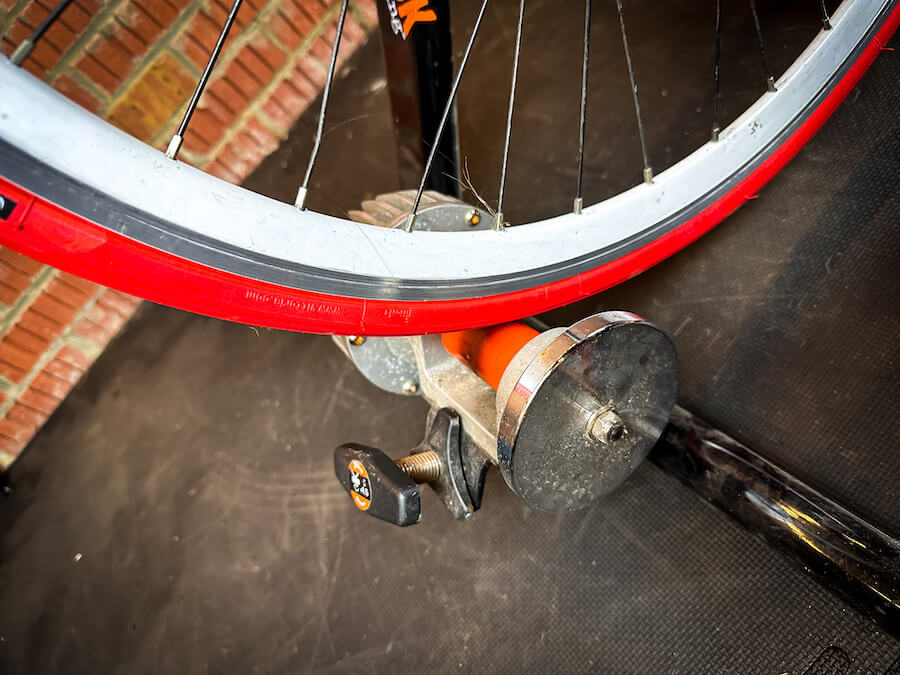
Different types of Bike Trainer
Bike trainers come in many shapes and sizes and are designed to be used in different ways. When looking for the perfect
Wheel On Turbo Trainer
A wheel on turbo trainer is where you put the whole
Direct Drive Turbo Trainer
Then we have a direct drive turbo trainer. These are trainers where you remove the
Tip: You can check the detailed comparison of the wheel-on vs. direct drive bike trainers!
Rollers
Rollers are a type of trainer that used to be very popular and still are for certain kinds of cyclists, such as track cyclists. A set of rollers is three small rolling pins where the
Comparison Table
| Wheel On Trainer | Direct Drive Trainer | Rollers | |
|---|---|---|---|
| Stability | Stable | Very Stable | Unstable |
| Cost | $50 – $250 | $500 – $1500 | $100 – $300 |
| Application (Smart) | On very few | Yes most trainers | Generally no apps |
| Set up | Quick and Easy | Few things to change | Quick |
| Storage | Folds up very small | Small enough | Typically fold away |
| Bike Wear | Rear Tire, Gearing | Gearing | Both tires, gearing |

Fluid Bike Trainers
Fluid
A fluid
Fluid trainers are very smooth to use and quiet even under heavy operation. They are fun to use, and even those heavy sprints feel great on the trainer. Fluid turbo trainers can be basic or have smart connectivity and be used on applications like Zwift.
Fluid trainers do come with some drawbacks. They wear through tires fairly quickly unless you use a turbo trainer tire and wear down other components such as the chain, chainrings, and even the cassette.
Recommended Trainers
Cycle Inn Fluid Trainer
It works with all different types of wheels from 26” to 700c and can be used with all different braking systems. The max capacity is 265lbs which is high and has a natural road feel, making it feel much more authentic.
The Cycle Inn fluid trainer is incredible value for money, coming in at $85. It looks great in a bright blue and comes with a front raiser and turbo trainer skewer, which is a nice touch. It’s very easy to get the
Kinetic by Kurt Smart Fluid Trainer
We love that it has smart capabilities and can be used with Zwift and other applications. It’s going to give a silky smooth feel to it, and it also comes with a free monthly subscription to Kinetic fit to get you started. This is one of the quietest fluid trainers on the market and is considered one of the best for ride feel.
The Kinetic by Kurt is one of the best smart fluid trainers on the market and one we highly recommend. It comes in a vibrant green and has large wide legs making it a very stable training even when you’re in those sprints. It works with all kinds of bikes but is best with a road

Magnetic Bike Trainers
Magnetic
A magnetic trainer works differently from a fluid trainer. The first thing to mention is typically, they will come with a controller attached to a long cord like a brake inner and outer. You screw this to the handlebars of your
The controller is typically on cheaper non-smart models and will give you options of the amount of resistance you add, typically between 6 to 12 levels. On smart models, it can be controlled automatically by an application such as Zwift or Sufferfest. It is nice to have control of the resistance, unlike on a fluid trainer.
Magnetic trainers do come with some drawbacks, like another wheel on trainers they wear through tires and other components on the bikes. Magnetic trainers are typically louder than fluid trainers and don’t give as realistic a feel, but this feeling is something very easy to get used to. They do have a limit to the resistance they can give compared to a fluid trainer.
Recommended Trainers
Euter Mangetic Trainer
The Euter is an excellent example of a budget magnetic
This trainer comes with a front riser, a quick-release trainer skewer, and a quick-release lever to get the
Saris S2 Smart Trainer
The Saris M2 is classed as one of the best wheel on smart trainers currently on the market and has some incredible capabilities. It comes in at $300, so not the cheapest, but with this trainer, you do get the best experience possible from a wheel on
The resistance is controlled by applications, and we highly recommend Zwift for a trainer like this. It gives smooth changes and will feel solid in a sprint. It’s the go to choice for many cyclists looking for a high-end wheel on trainer, and we can see why.
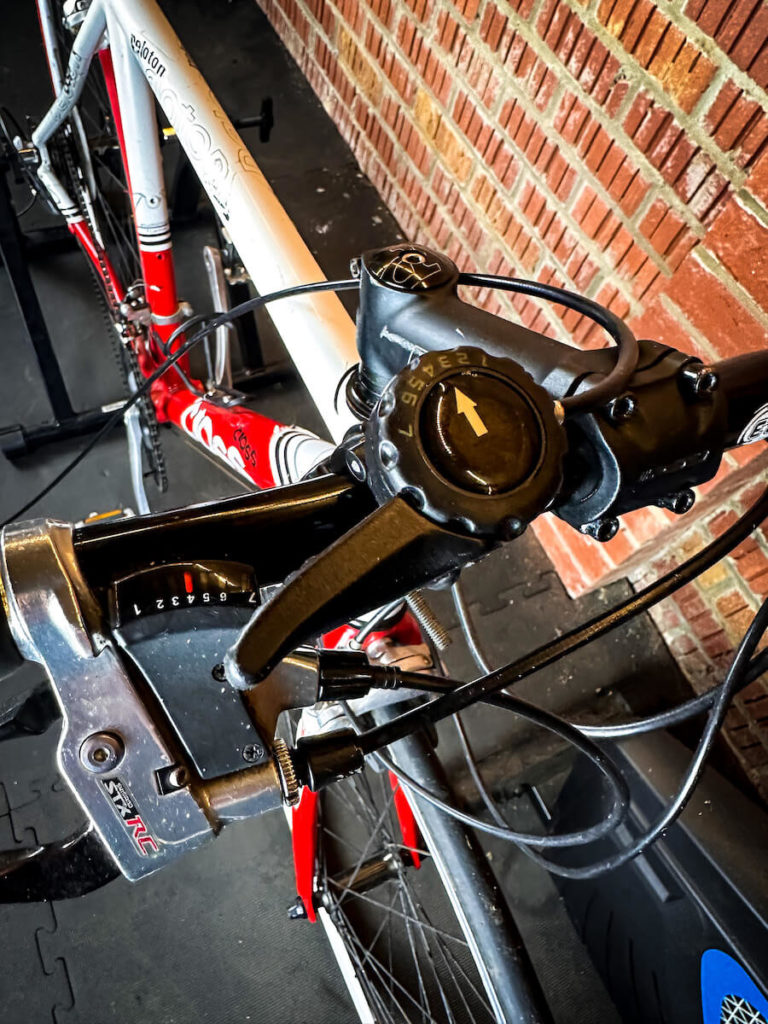
Cmparison
| Fluid Trainer | Magnetic Trainer | |
|---|---|---|
| Resistance Levels | 1 | 6-12 |
| Resistance Power | High | Low |
| Feel | Realistic | Unrealistic |
| Cost | High | Low |
| Noise | Quiet | Loud |
| Dependability | Multiple Years | Multiple Years |
| Design | Wheel on | Wheel on or direct drive |
So now you know about fluid and magnetic trainers, what are the differences you will need to consider before purchasing the right trainer for you? In this next section, we’re going to run through the differences you’re going to notice.
Resistance Levels
The biggest difference you will find when it comes to picking between a fluid or magnetic trainer is the way the resistance works. In fluid trainers, you will only have one single level of resistance which, as you speed the rear wheel up, will get more challenging. This is because the quicker fan in the fluid spins, the more resistance the fluid creates.
Then we have magnetic trainers, which have multiple resistance levels, typically between 6 and 12. This means instead of having to speed up the roller on the rear to create the resistance, you can just pick a level, and the rear roller will tighten up. The magnetic system is better for intervals, but the fluid is great because it can create a near unlimited amount of pressure.
Resistance Power
Resistance power is the amount the trainer can challenge you. Fluid trainers basically have unlimited resistance. The more the fan in the fluid spins up, the more resistance it creates, and with the right gearing, even the most powerful rider could create a challenging workout for themselves.
On magnetic trainers, there is a limit to the amount of resistance that can be put on. When you get to the top level of the trainer and the top gear on the
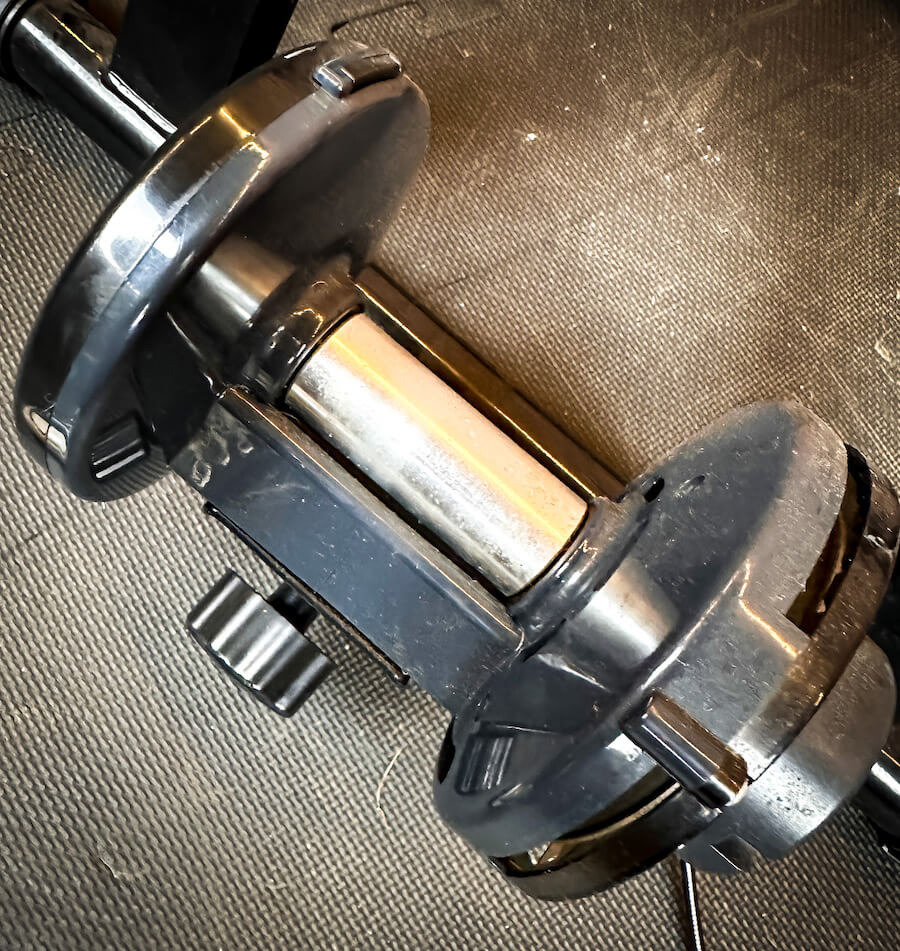
Feel
When we speak about feel, this is what it’s like to ride a
On a magnetic trainer, it does feel less realistic as the changes in resistance are very sharp, and it doesn’t have the smoothest feel to it. The fluid trainer does have a much better feel to it compared to the magnetic, in our opinion.
Cost
Wheel on trainers, fluid or magnetic, vary from around $50 to $300, and the more you generally spend, the better experience you will get. Fluid trainers are a little bit more money, and this is because they are more challenging for companies to make but are much quieter and smoother to use.
Noise
Trainers are noisy machines especially wheel on trainers, and many cyclists ask us which is the quieter of these two. Typically we find that fluid trainers are much quieter than magnetic trainers. With many moving parts being encased in a fluid chamber, it does make a huge difference to the vibrations and noise level.

Which one is for you?
Both a fluid or magnetic trainer are going to be a good investment for your indoor cycling. They both have advantages and disadvantages, but there’s very little in it. The fluid is perfect if you’re looking for a quiet, simple trainer with no resistance control, which you can just use for a warmup or a basic workout.
If you are looking for something that can offer you more structure to control the resistance and do more technical workouts, such as intervals and ramp sessions, you will get more from a magnetic trainer. Either is going to get the legs spinning and the muscles pumping indoors, and that’s the first step of getting fit when the weather is bad.
FAQs
What’s the best type of turbo trainer?
A high-end direct drive turbo trainer with smart capabilities will probably give you the best experience as far as indoor cycling goes.
Are fluid turbo trainers worth buying?
Yeah, they are excellent for an indoor workout and come in at an amazing price. They may cost a little more than magnetic trainers, but they are much quieter.
Why is a smart turbo trainer better?
Smart trainers are much better because they have the ability to connect to applications such as Zwift. Some can automatically control resistance and incline and decline.
